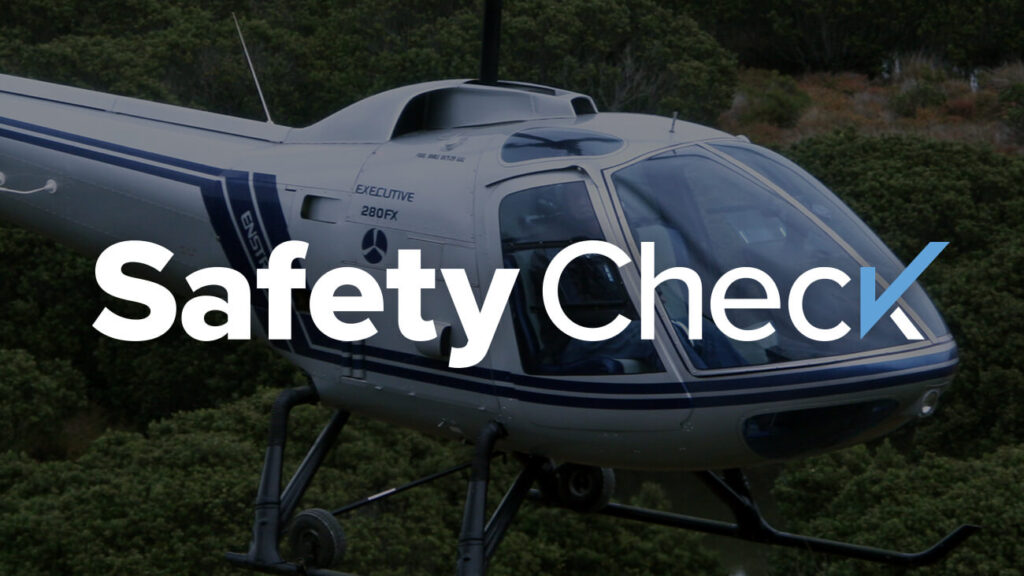Know When to Say “No”

On a recent flight to Menominee, MI to visit the factory, Chuck Surack, Steve Yaggy, Roger Sharkey and myself were talking about helicopters, as we often do. We started talking about helicopter safety, and while we know that flying in helicopters is safe, how can it be even safer?
The statistics of helicopter safety reflect one common denominator for a large percentage of helicopter accidents and that is “Loss of Control” caused by human factor or more commonly known as pilot error.
Anybody who has taken a practical test by me knows that I incorporate NTSB reports into the check ride. Undoubtedly one of the most tragic and publicized helicopter accidents on record was the passing of Kobe Bryant, his young daughter and seven others on January 26, 2020 in a Sikorsky S-76B.
The NTSB recently published the findings in an 86 page report that details everything its investigators found in the year long examination of the crash. The pilot of the Sikorsky S-76B, Ara Zobayan, was operating as a Part 135 on demand air taxi flight. The board confirmed the helicopter was mechanically sound and its engines and controls were working normally prior to the crash. The NTSB stated in its final report that the cause of the accident was the pilot’s decision to continue flight under adverse weather conditions and the result was the pilot’s “spatial disorientation” and loss of control.
We can only speculate why Zobayan elected to depart from the Atlantic Aviation terminal at the John Wayne Orange County Airport with low ceilings and visibilities for the 25 minute flight Camarillo, CA. The leading investigator for the safety board said, “It is possible that the pilot experienced indirect or self-induced pressure to please a high-profile client and a bias toward continuing with the established plan.”
During our company safety meetings, I often talk about know when to say NO. It can be difficult for pilots who are customer service oriented to tell a client like Kobe Bryant NO to taking off or continuing the flight in adverse weather conditions. I had to intervene once when a very good customer tried to pressure the pilot assigned to the flight to take off even though the weather forecast was less than our VFR minimums. This is a classic case of “direct pressure” where the lead passenger tried to convince the pilot to take off into adverse weather because he absolutely had to be at a very important personnel meeting. I think the passenger said something like, “Well the pilot from the other helicopter company wasn’t afraid to fly in weather like this.” I wasted no time calling the client myself and informing him that I understand the importance of making the meeting however we have safety protocols that are strictly adhered to. I happened to know the pilot the client was referring to and I am sure he would have taken that flight. This pilot had a reputation in the area and often admitted to flying in the clouds. Instructors call this the “macho” attitude.
Do you have personal minimums that you adhere to? We all know that rotorcraft VFR minimums for Class “G” airspace are ½ mile and clear of clouds during the day and 1 mile at night. Are you really going to be flying VFR with ½ visibility? Yes, it is legal according to the FAR’s but is it wise?
Reducing pilot error helicopter accidents begins with emphasizing the importance of decision making. Start by knowing your own limitations and recognize when direct and indirect pressure exists. If you are a helicopter CFI please spend time with your students and talk about decision making and making good judgement. Many pilots are afraid to say NO because others might look down on them as being weak or timid. Instructors need to teach students that the bravest pilots are the ones that are not afraid to say NO at any time. Even if that means landing in a vacant church parking lot to wait out the weather. A Principal Operations Inspector (POI) from the Greater Chicago FSDO told me a story where the local police had called his office about a helicopter landing in an empty church parking lot and the pilot and his passengers were waiting inside the helicopter. So, the POI asked the officer to check on them and make sure everything was ok. When the officer called the POI back, he said, “The pilot said the weather had worsened and decided to land.” The pilot was afraid he was in trouble and the POI said to the officer, please relay this message from an FAA inspector, “Your decision to land off airport probably saved your life and that of your passengers – GREAT JOB!”
As helicopter pilots we have the ability to land virtually anywhere when things aren’t going in our favor. Good decision making is knowing when to say NO.
Until then…fly safe.

Randy is a dual rated Airline Transport Pilot with 13,000 flight hours in airplanes and helicopters. He has type ratings in the BE400 and CE500. Randy has been a rotorcraft Designated Pilot Examiner representing the Grand Rapids FSDO since 2014. Currently he works for Sweet Helicopters, a northern Indiana Part 135 air carrier operator and serves as the Airport Manager of the Goshen Municipal Airport.
About Enstrom Helicopter
From Rudy Enstrom’s early designs in 1943 to initial testing in a Michigan Quarry in 1957 to aircraft operating on six continents, Enstrom Helicopter Corporation has maintained a reputation for safety, value and performance. Based in Menominee, Michigan and proudly made in the United States, Enstrom has a rich history for design innovation. The goal is to provide helicopters to the customer’s exact specification and deliver support and maintenance worldwide.